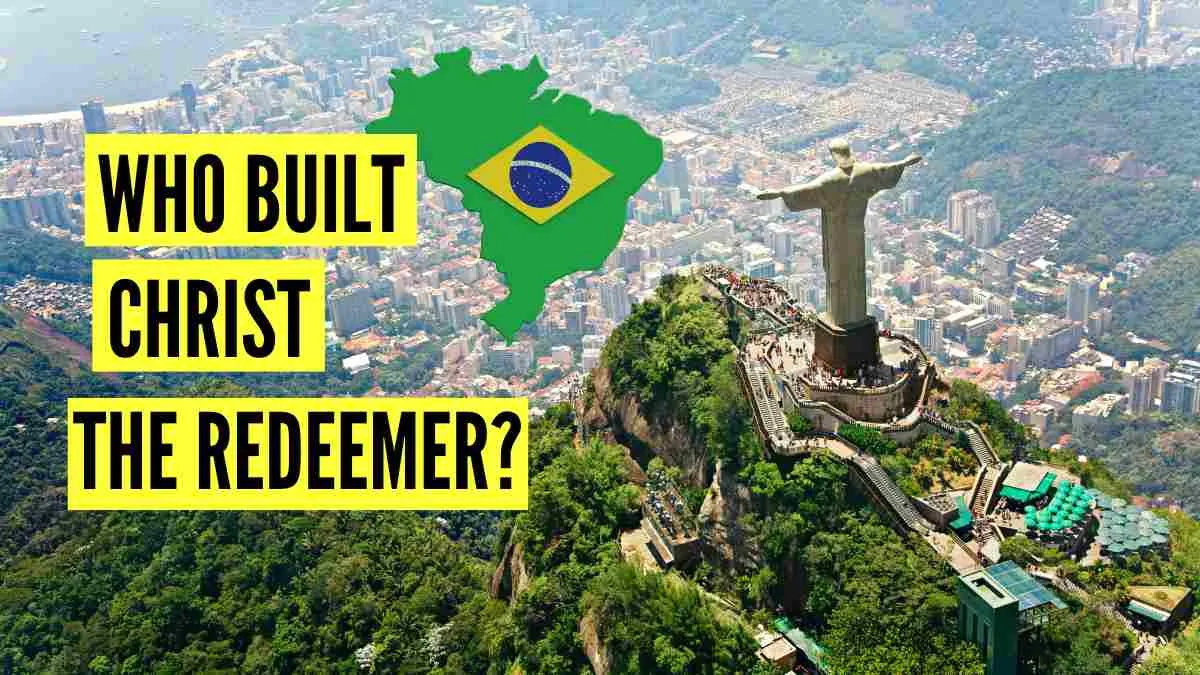Located in Rio de Janeiro, Christ the Redeemer is one of the world's most prestigious places; it is a powerful symbol of peace, faith, and Brazil's identity. Situated on top of Mount Corcovado, this huge statue of Jesus Christ looks at the city with eternal grace and grandeur. Recognized as one of the world's seven wonders, it attracts millions of tourists and believers every year. Beyond its breathtaking architecture, the memorial reflects the deep-rooted Catholic heritage and cultural pride of Brazil. In the early 20th century, Christ the Redeemer was more than just a religious symbol- it was a beacon of unity, hope, and flexibility. Its attractive history inspires tourists to come here from worldwide.
Check Out: Louvre Museum: Check History, Significance and Interesting Facts
Key Features
| Feature | Details |
| Name | Christ the Redeemer (Cristo Redentor) |
| Location | Mount Corcovado, Rio de Janeiro, Brazil |
| Height | 30 meters (98 feet), 8 meters (26 feet) pedestal |
| Arm Span | 28 meters (92 feet) |
| Material | Reinforced Concrete and Soapstone |
| Designer | Heitor da Silva Costa (Brazil) |
| Main Sculptor | Paul Landowski (France) |
| Face Sculptor | Gheorghe Leonida (Romania) |
| Construction Period | 1922–1931 |
| Unveiled On | October 12, 1931 |
| Purpose | Symbol of Christianity and peace |
| UNESCO Status | World Heritage Site (since 2012) |
| Recognition | One of the New Seven Wonders of the World (2007) |
| Chapel Inside | Chapel of Our Lady of Aparecida (at the base) |
| Annual Visitors | Over 2 million tourists |
Who Made Christ the Redeemer?
Christ the Redeemer was a colossal sculpture made by artists and engineers from many countries. The concept of early design was done by the Brazilian engineer Heitor da Silva Costa, who inspected the project from planning to execution. The statue itself was sculpted by French-Polish artist Paul Landowski, who prepared the main structure in France before sending it to Brazil. Christ's complex face was coined by Romanian artist Gheorghe Leonida, whose work added human expression and peace to the memorial. Brazilian engineers, architects, and workers played an important role in constructing a large-scale statue on Mount Corcovado between 1922 and 1931. This construction included innovation and accurate, border-crossing cooperation, making it a truly global effort in creating a timely Brazilian icon.
Interesting Facts About Christ the Redeemer
-1751177161136.jpg)
Lightening Strike: The statue is struck several times a year due to lightening. In 2014, a finger portion was damaged during a storm, but was later repaired.
Secret Room: There is a small chapel inside the base called the Chapel of Our Lady of Apresida, which is used for weddings and baptisms.
Construction Challenges: The idol was built in pieces and collected above the mountain, a difficult achievement with limited technology in the 1920s.
Environmental Risk: Wind, rain, and changes in temperature require frequent restoration efforts in continuous exposure.
Tourist Hotspot: With the panoramic views of Rio, more than 2 million people do it annually, including Sugarloaf Mountain and Copacabana Beach.
Soapstone Skin: Light-colored soapstone was imported from Sweden and selected for its heat resistance and ease of use.
Large-Scale Foundation: Despite being so long, the idol is designed to bear high winds and natural changes; its base is deeply embedded in the granite of Corcovado.

Comments
All Comments (0)
Join the conversation